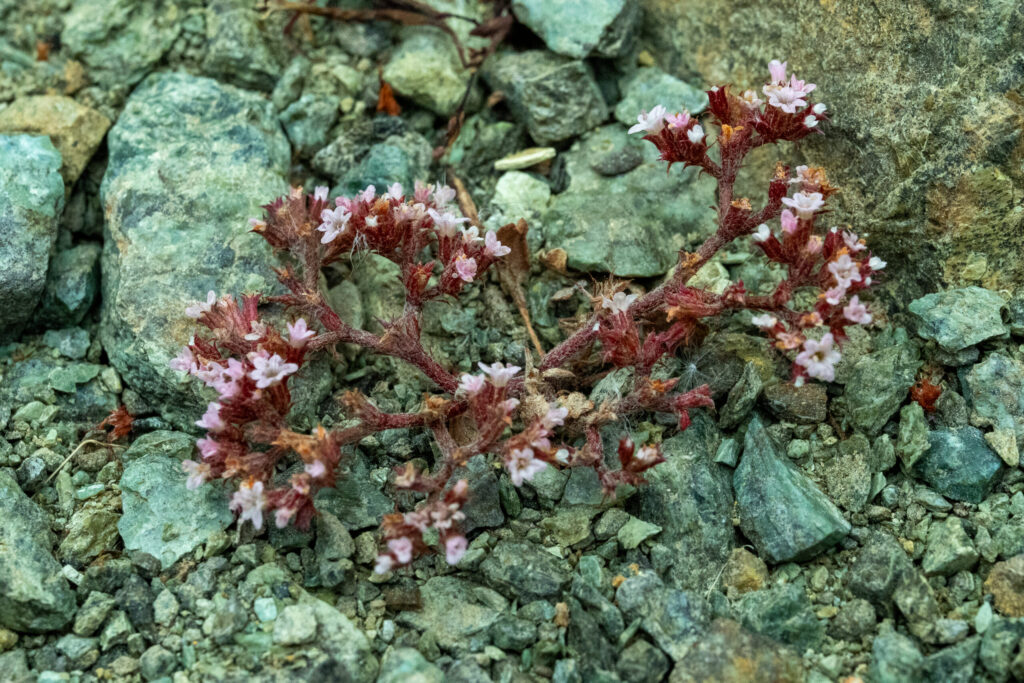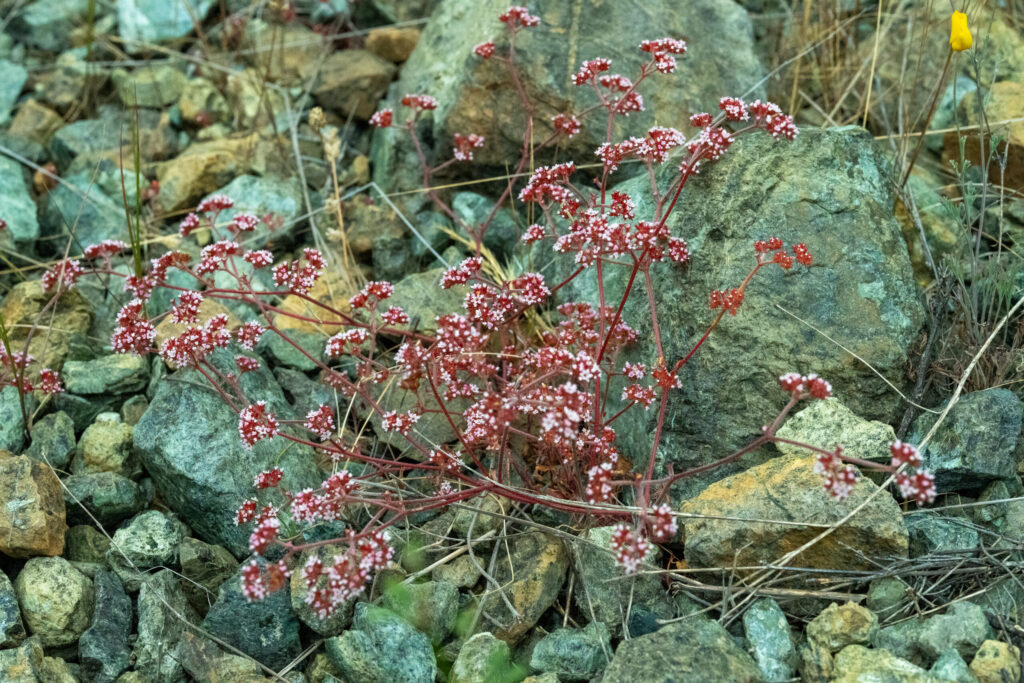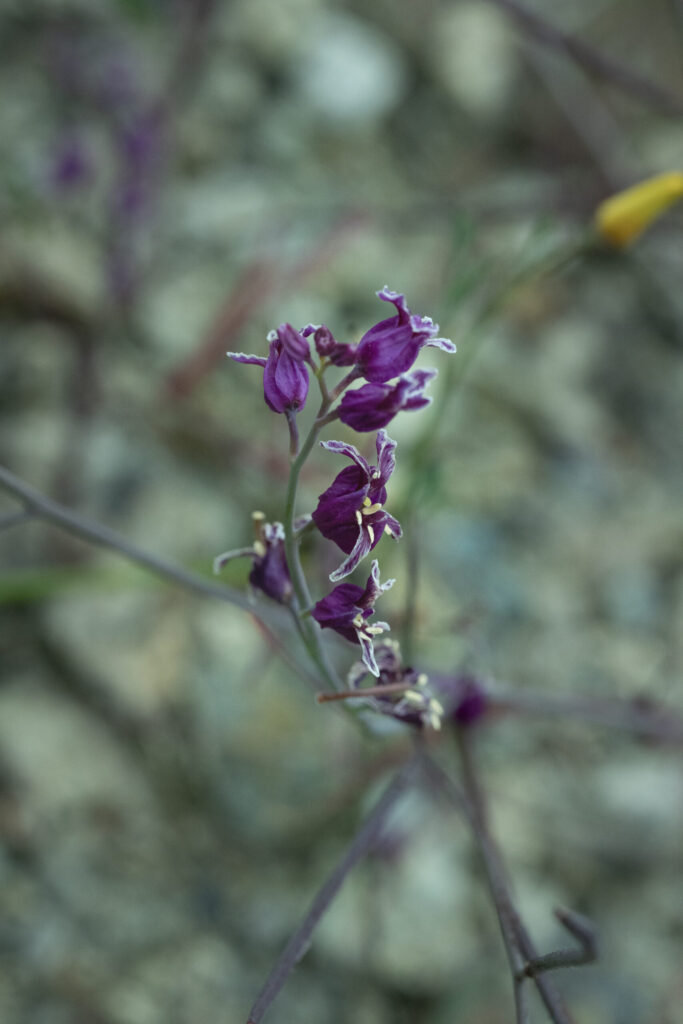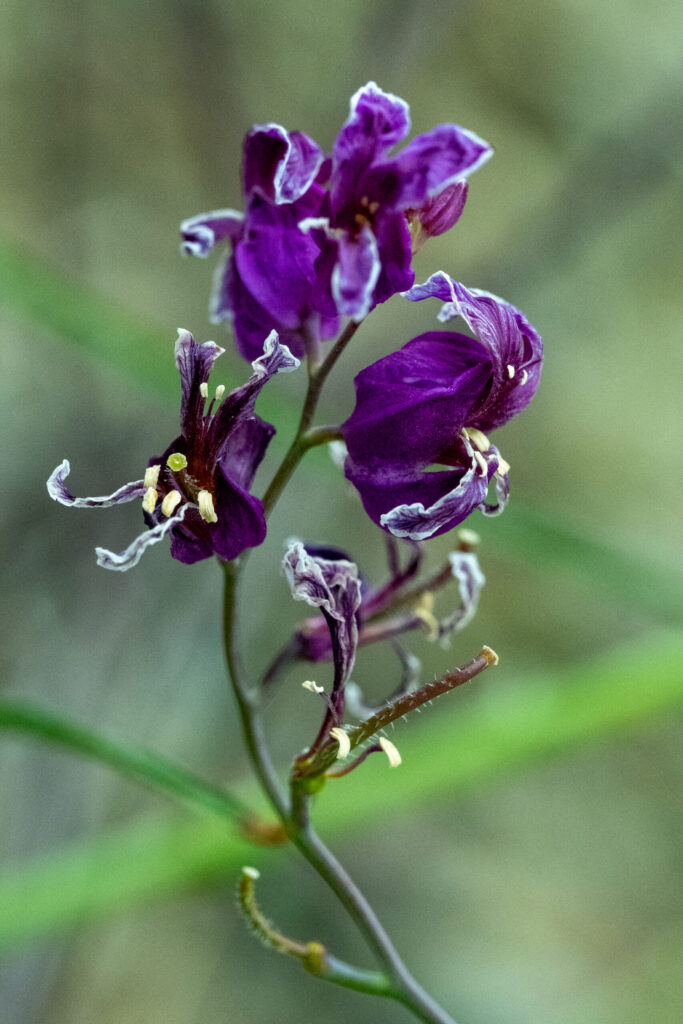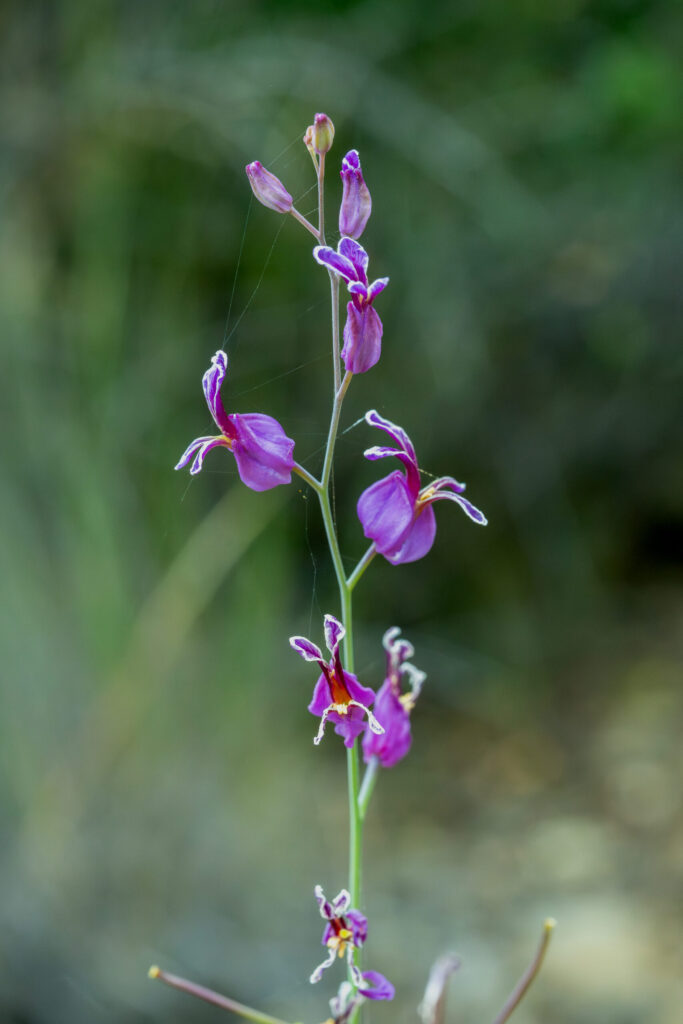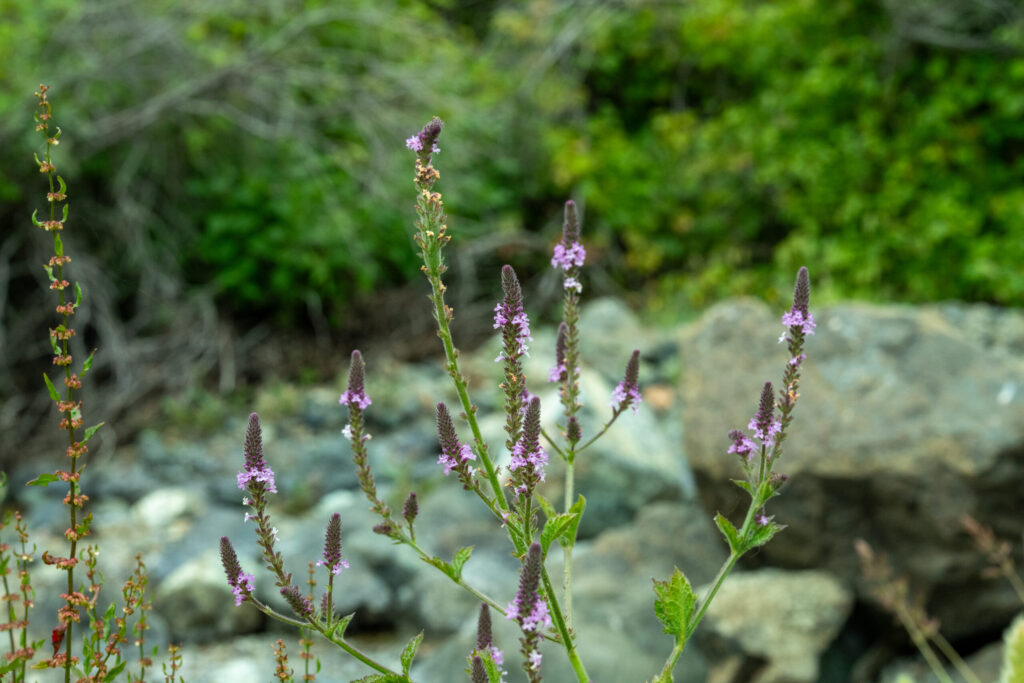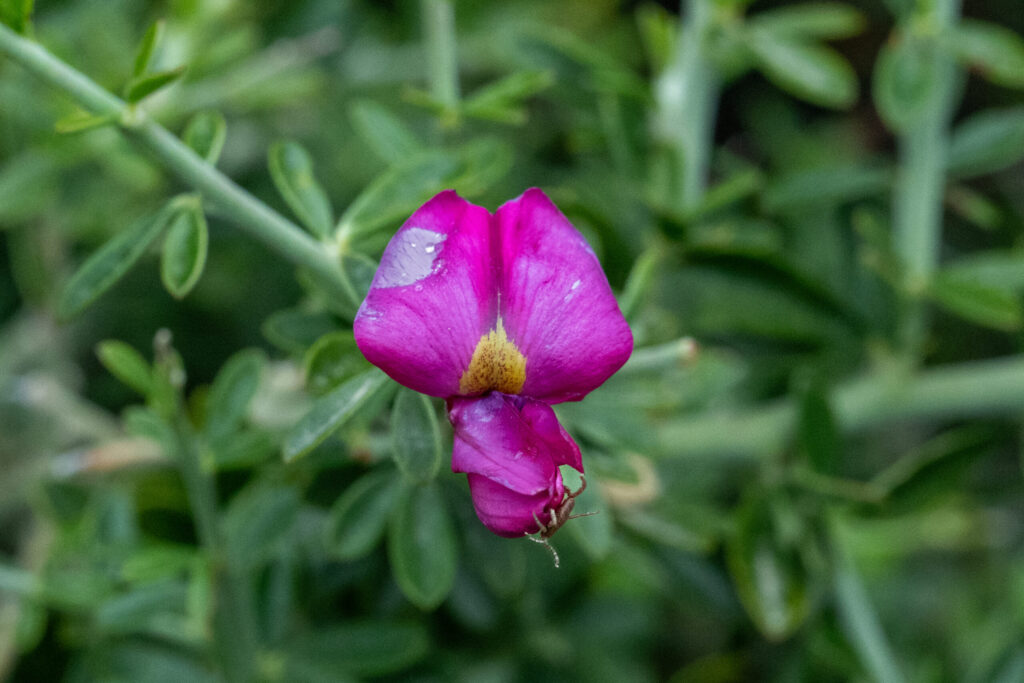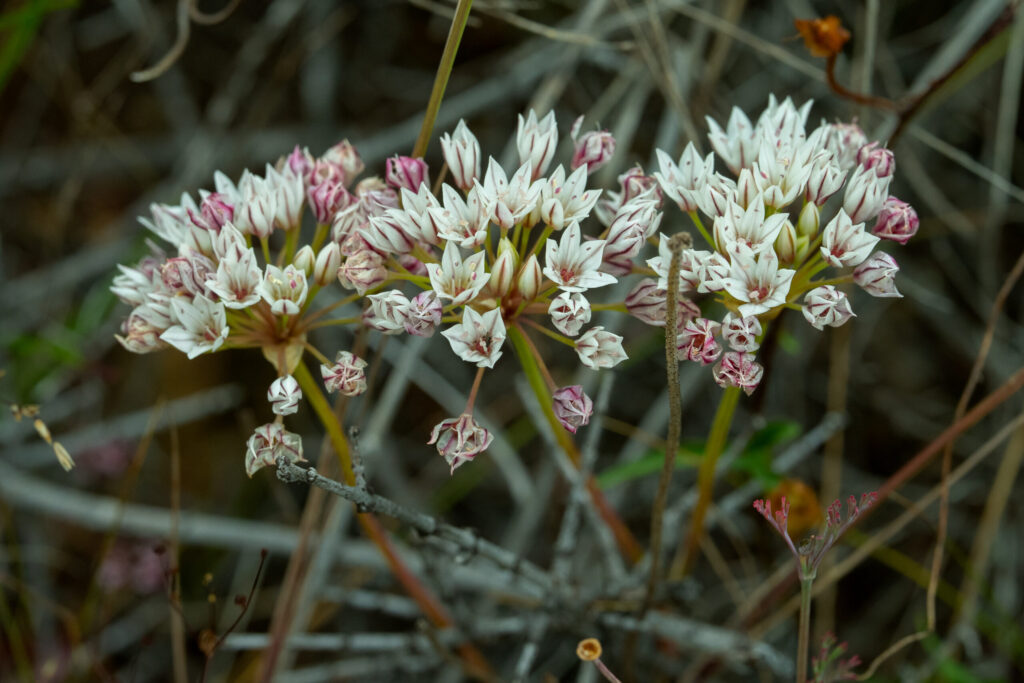South of the Cuesta Grade, in the Irish Hills region behind San Luis Obispo’s Costco gas station, there lies a trailhead that leads to an enchanted land of magical stone called serpentinite. Produced underwater at great heat and pressure (hydrothermal metamorphism) from its parent rock, peridotite, serpentinite contains many minerals, among which can feature nickel, chromium, and cobalt–some heavy hitters, there! Serpentine soils, therefore, are high in minerals that most plants can’t tolerate; those that have developed a strategy to deal with them can thus enjoy a competitive advantage. From this small group of serpentine-soil-adapted plants come many of California’s endemic plant species (around 300 of the 2100–that’s right, 2100); species that are found nowhere other than in California. The two most common families seem to be (here in California) buckwheat and (here and globally on serpentine soils) mustard, both found in abundance here at Froom Creek.
So on the first Saturday in June a group of nature journaling enthusiasts from the Morro Coast Audubon Society met at Costco to go for a walk. [hold for laughter.] We were joined by a biology professor from Cal Poly, Nishanta “Nishi” Rajakaruna, whose main interest is “plants growing on ‘extreme’ substrates (serpentinite, limestone, mine tailings, guano, etc.” And he proved to be a wealth of both information about and enthusiasm for the plant communities that have developed on the serpentine soils found in the Irish Hills.
Here are a few. Chorizanthe, a low-growing plant in the buckwheat family, one with teeny-tiny flowers, favors serpentine soils. There are quite a few species in California; the one we encountered most frequently today was C. breweri which, even though it bears only tiny pink flowers, can actually spread to a fairly noticeable extent, both individually and as a group. The Irish Hills also have a strictly local endemic species, C. aphanantha, but I wasn’t able to get a picture of any of those.
One of the more beautiful flowers that makes a home in a serpentine soil environment is a plant in the mustard family (Brassicacea) called Streptanthus glandulosus glandulosus, or (according to Nishi, quoting a student of his) “Most beautiful jewelflower.” (CalFlora gives the common name Bristly Jewelflower, so take your pick, I guess.)
The class was planned as an easy 3/4-mile, 30-minute hike out, an hour of sketching, and an easy 30-minute hike back. However, whenever you put yourself in the hands of an enthusiast, you know you’re likely to just be going along for the ride, because even if you’re tired and would rather turn back, it’s just too much fun to stop. And today was no exception. After our initial 3/4 mile or so, our journaling mentor directed us to a lovely creekside area to use as a base camp, and she gave the group some ideas for what to focus on, what kinds of questions to ask, and the like. And seemingly just like that, the time to turn back had come. Journal pages shared (by those brave enough to do so), and class was over.
Here are pictures of a couple more flowers that I found at the creek; they aren’t serpentine endemics but they seem to thrive there nonetheless. The first one, with the upright flower bracts, is one I haven’t been able to identify (I just started learning my Califlora; I’m sure it’s common to anyone who knows); the second is chaparral pea. One of Nishi’s colleagues has found that none of the chaparral pea on the site sets seed, leading one to wonder how it’s become so widespread there: clonal reproduction?
After the class ended, Nishi mentioned that he would be happy to lead whoever was still interested to a lovely little section of creek “just a bit” farther along the trail, a place where we could find at least five specialty endemics (the bog thistle, one local population of which–the Chorro Creek bog thistle–is endangered; the aforementioned Streptanthes and Chorizanthe species, an intriguing allium, and more) growing within a 5-square meter plot. Naturally, we couldn’t resist, although in the event, it involved a full extra mile up to the site (and, of course, that same extra mile on the way back down).

See that dark shadow leading SW near the center bottom? That’s where we’d have turned around without Nishi’s “just a bit farther” site lure…
By this point, I was nearing exhaustion. This had been planned as an easy hike with a lot of lolling about and sketching. We’d left our water in the car, and I had brought (and carried) two of our wonderful folding chairs that we plan to use as camp chairs when we finally start overlanding. Being car-camping chairs, though, they’re built for comfort and collapsibility, not light weight. My shoulders haven’t been this sore since my swimming days back in college! But there was no way I was turning back when an expert of Nishi’s caliber was offering more knowledge!
I may be glad I didn’t turn back, but the fatigue occasioned by my ill-advised heavy load turned making photos into even more of a challenge than it already is. Still, I got a nice image of that intriguing allium:
All in all, a wonderful, if rather tiring, morning!


